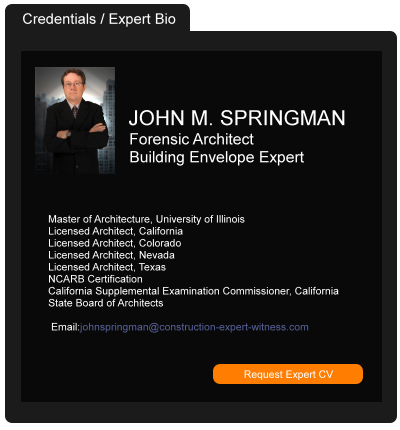After 15 Years, Settlement Arrested at San Francisco's Millennium Tower
June 26, 2023 —
Nadine M. Post - Engineering News-RecordAfter overcoming several snags, the team for the voluntary effort to stem future significant settlement and tilting at San Francisco’s 645-ft-tall Millennium Tower has declared the project a success, now that loads have been fully transferred to 18 new perimeter piles driven to bedrock.
Reprinted courtesy of
Nadine M. Post, Engineering News-Record
Ms. Post may be contacted at postn@enr.com
Read the full story... Read the court decisionRead the full story...Reprinted courtesy of
Newmeyer & Dillion Partner Aaron Lovaas & Casey Quinn Recognized by Super Lawyers
July 21, 2018 —
Newmeyer & DillionLAS VEGAS, Nev. – JUNE 11, 2018 – Prominent business and real estate law firm Newmeyer & Dillion LLP is pleased to announce that partner
Aaron Lovaas has been selected to the 2018 Mountain States Super Lawyers list, and associate
Casey Quinn has been selected to the 2018 Mountain States Rising Stars list by Super Lawyers. Each year, no more than 5 percent of lawyers are named to a Super Lawyers list and less than 2.5 percent are named to the Rising Stars list. This is the 9th consecutive year Lovaas has been honored, while Quinn has been consistently selected as a Rising Star honoree in prior years.
Aaron Lovaas is a partner in the Las Vegas office. As a transactional attorney and business litigator, Lovaas has the ability to evaluate legal issues from both points of view and help his clients understand their best option. He also brings to the table experience as a business owner, having owned and managed his own boutique law firm for 12 years.
Casey Quinn, an associate in the Las Vegas office, focuses his practice in complex commercial and construction litigation. He represents a variety of business entities in commercial disputes, including contract claims, business torts, privacy lawsuits, defamation, and fraud. Quinn is a past chair of the Construction Law section of the State Bar of Nevada and has successfully argued before the Supreme Court of Nevada, as well as settled disputes through various forms of conflict resolution including mediation and arbitration.
Super Lawyers is a rating service of outstanding lawyers from more than 70 practice areas who have attained a high-degree of peer recognition and professional achievement. The patented selection process includes independent research, peer nominations and peer evaluations.
About Newmeyer & Dillion
For more than 30 years, Newmeyer & Dillion has delivered creative and outstanding legal solutions and trial results for a wide array of clients. With over 70 attorneys practicing in all aspects of business, employment, real estate, construction and insurance law, Newmeyer & Dillion delivers legal services tailored to meet each client's needs. Headquartered in Newport Beach, California, with offices in Walnut Creek, California and Las Vegas, Nevada, Newmeyer & Dillion attorneys are recognized by The Best Lawyers in America©, and Super Lawyers as top tier and some of the best lawyers in California, and have been given Martindale-Hubbell Peer Review's AV Preeminent® highest rating. For additional information, call 949.854.7000 or visit www.ndlf.com.
Read the court decisionRead the full story...Reprinted courtesy of
South Carolina Legislature Defines "Occurrence" To Include Property Damage Arising From Faulty Workmanship
May 26, 2011 —
Tred R. Eyerly - Insurance Law Hawaii On May 17, 2011, South Carolina passed legislation to combat the restrictive interpretation of what constitutes an "occurrence" under CGL policies. S.C. Code Ann. sec. 38-61-70.
� The legislation reversed a decision by the state's Supreme Court issued earlier this year. See Crossman Communities of North Carolina, Inc. v. Harleysville Mut. Ins. Co., 2011 W.L. 93716 (S.C. Jan. 7, 2011). Crossman had overruled an earlier decision by the South Carolina Supreme Court that holding that defective construction was an “occurrence.” Crossman, however, reversed course, holding that damages resulting from faulty workmanship were the “natural and probable cause” of the faulty work and, as such, did not qualify as an “occurrence.”
�Read the full story…
�Reprinted courtesy of Tred R. Eyerly, Insurance Law Hawaii. Mr. Eyerly can be contacted at te@hawaiilawyer.com
Read the court decisionRead the full story...Reprinted courtesy of
Labor Code § 2708 Presumption of Employer Negligence is Not Applicable Against Homeowners Who Hired Unlicensed Painting Company
December 02, 2015 —
Kristian B. Moriarty & Yvette Davis – Haight Brown & Bonesteel LLPIn Vebr v. Culp (Filed 10/28/2015, No. G050730), the Fourth District Court of Appeal affirmed a trial court’s grant of summary judgment in favor of homeowners, where an employee of an unlicensed painting company was injured on the premises. Despite the fact that the painting company was deemed unlicensed for failure to acquire workers’ compensation insurance, the negligence presumption of Labor Code § 2708 was inapplicable to the homeowners as de facto “employers" of the plaintiff.
Plaintiff, Tomas Vebr, was employed by OC Wide Painting, a licensed painting contractor. OC Wide Painting had a license issued by the California Contractors State License Board, but had filed for an exemption from the requirement that it maintain workers’ compensation insurance. The exemption was granted on the basis OC Wide Painting “did not have any employees.” However, OC Wide Painting actually had multiple employees, including Vebr. Therefore, by operation of law, the license was deemed void.
Reprinted courtesy of
Kristian B. Moriarty, Haight Brown & Bonesteel LLP and
Yvette Davis, Haight Brown & Bonesteel LLP
Mr. Moriarty may be contacted at kmoriarty@hbblaw.com
Ms. Davis may be contacted at ydavis@hbblaw.com
Read the court decisionRead the full story...Reprinted courtesy of
Cross-Office Team Secures Defense Verdict in Favor of Client in Asbestos Case
November 18, 2024 —
Lewis Brisbois NewsroomSt. Louis/Kansas City, Mo. (October 23, 2024) - St. Louis Partners Tracy J. Cowan and Karen M. Volkman, along with Kansas City Partner Vincent Gunter, secured a defense verdict in a Jackson County, Missouri matter on behalf of a Lewis Brisbois client, which was the successor-in-interest to a life, health and reinsurance firm, against claims brought by an individual who worked in the corporate headquarters and was diagnosed with mesothelioma.
Background
The plaintiff was 62 years old when she was diagnosed with mesothelioma. She worked as a clerk for several years in the 1970s in a 19-story office building that opened in 1963. The plaintiff claimed construction work being performed in the areas where she worked exposed her to asbestos from above the suspended ceiling. The beams and girders in the building were fireproofed with sprayed-on insulation. Although the plaintiff did not perform any maintenance work, she relied on evidence from several operating engineers who worked above the ceiling near the fireproofing to establish the presence of asbestos in the building. The plaintiff submitted claims for negligence and unsafe workplace. At the beginning of trial, the LBBS client had a pending motion for summary judgment on the grounds that the plaintiff’s exclusive remedy was governed by the Missouri Workers’ Compensation Law. The Court denied a motion to continue the trial and submitted the workers’ compensation issue as an affirmative defense.
Read the court decisionRead the full story...Reprinted courtesy of
Lewis Brisbois
Four Things Construction Professionals Need to Know About Asbestos
September 23, 2019 —
Daniel King - Construction ExecutiveAlthough asbestos had its heyday in America half a century ago, asbestos exposure remains a major health risk and financial liability for construction professionals. One study estimates that at least 1.3 million construction industry workers are still at risk for occupational asbestos exposure.
Up until the 1980s, U.S. manufacturers mixed asbestos into thousands of construction products. Asbestos is a unique mineral that can be worked into flexible fibers while still retaining its durability and heat resistance. Unfortunately, the fibrous nature of asbestos also makes it highly toxic.
This article provides an overview of what construction professionals need to know about asbestos, including:
- potential long-term health consequences of asbestos exposure for workers and short-term financial consequences for employers;
- Occupational Safety and Health Administration asbestos regulations;
- how to identify and safely remove asbestos-containing materials; and
- what people should do if they have a history of asbestos exposure.
Reprinted courtesy of
Daniel King, Construction Executive, a publication of Associated Builders and Contractors. All rights reserved.
Read the court decisionRead the full story...Reprinted courtesy of
Mr. King may be contacted at
dking@asbestos.com
Specific Performance: Equitable Remedy to Enforce Affirmative Obligation
January 18, 2021 —
David Adelstein - Florida Construction Legal UpdatesWhen a party breaches an agreement, particularly when dealing with real estate, there is an equitable remedy known as specific performance that requests the trial judge issue an order to affirmatively force the breaching party to perform, i.e., close on the real estate contract. You are asking the court to require the other party to specifically perform an affirmative obligation. See Melbourne Ocean Club Condominium Ass’n, Inc. v. Elledge, 71 So.3d 144, 146 (Fla. 2011).
A decree of specific performance is an equitable remedy ‘not granted as a matter of right or grace but as a matter of sound judicial discretion’ governed by legal and equitable principles. Specific performance shall only be granted when 1) the plaintiff is clearly entitled to it, 2) there is no adequate remedy at law, and 3) the judge believes that justice requires it.
Castigliano v. O’Connor, 911 So.2d 145, 148 (Fla. 3d DCA 2005) (internal citations omitted).
An example of specific performance may play out, as mentioned, in a real estate contract where a seller refuses to close on the transaction.
Read the court decisionRead the full story...Reprinted courtesy of
David Adelstein, Kirwin Norris, P.A.Mr. Adelstein may be contacted at
dma@kirwinnorris.com
Insurer’s Duty to Defend: When is it Triggered? When is it Not?
February 18, 2015 —
Zach McLeroy – Colorado Construction LitigationIn Colorado it is well recognized that an insurer has a broad duty to defend its policyholder against pending claims. An insurer’s duty to defend is triggered when the underlying complaint against the insured alleges any set of facts that might fall within the coverage policy. Greystone Construction, Inc. v. National Fire & Marine Insurance, Co., 661 F.3d 1272, 1284 (10th Cir. 2011). Even if the insurer’s duty to defend is not clear from the pleadings filed against the insured, the insurer’s duty to defend is triggered if the claim is potentially or arguably within the policy coverage. Id. If there is any doubt as to whether a theory of recovery falls within the policy coverage, such doubt is decided in favor of the insured and the insurer’s duty to defend is triggered. Id. In order to avoid this duty to defend, an insurer must show that an exemption to the policy applies and that no other basis exists for coverage under the policy.
In Cornella Brothers, Inc. v. Liberty Mutual Fire Insurance Company, 2014 WL 321335 (D. Colo. Jan. 29, 2015), the Court was to determine whether Liberty Mutual Fire Insurance Company (“Liberty Mutual”) had a duty to defend a lawsuit filed against its insured, Cornella Brothers, Inc. (“Cornella”). The underlying lawsuit alleged construction defects at a recharging facility. Upon being named a party to the underlying litigation, Cornella provided notice to Liberty Mutual and demanded that Liberty Mutual defend Cornella.
Read the court decisionRead the full story...Reprinted courtesy of
Zach McLeroy, Higgins, Hopkins, McLain & Roswell, LLCMr. McLeroy may be contacted at
mcleroy@hhmrlaw.com


































































